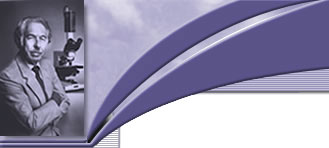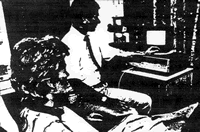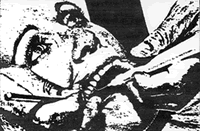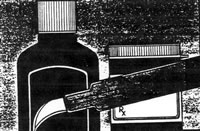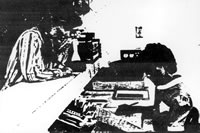Step
2 - Patient Education |
|
Patients are informed
about the nature of
periodontal infections,
specific bacterial
risk factors, how tissue
damage occurs, and
the possibility of
transmission of organisms
from person to person.
(Developments in research
and conceptual approaches
in treating THE DISEASE
PROCESS are continually
updated by close contact
with ORATEC CORPORATION,
IDHF, AND RESEARCH.)
Significant factors
are MICROBIAL 1) Types
, 2) Numbers, 3) Activity,
and 4) Organizational
patterns, as well as
5) White blood cell
(WBC) counts. |
Step
3 - Professional
Treatment |
Step
4 - Patient Instruction |
|
After an appropriate
interval the patient’s
progress is assessed
by MONITORING SUBGINGIVAL
microorganisms and
the prevalence of white
blood cells (WBC).
Complete and repeated
localized MONITORING
is essential in establishing
the END POINTS of treatment
as well as assessing
the corroborating CLINICAL
SIGNS and SYMPTOMS
of HEALTH (pockets,
bleeding, color, pain,
shape, etc.). In this
way “FALSE NEGATIVE” readings
are held to a minimum.
Use of “MULTIPLE
AGENTS” is an
essential “CONCEPT” in
controlling these “MIXED
INFECTIONS”. |
Step
6 - Modulation
of Therapy |
|
If disease related
microbial complexes
have not been converted
to ones associated
with health (BACTERIAL
CONVERSION), and if
white blood cell levels
remain high, IN-OFFICE
TREATMENTS and SELF-CARE
PROGRAMS need to be
MODULATED. Additional
AGENTS and DELIVERY
SYSTEMS should be considered
(CUSTOM-FIT DELIVERY
TRAYS). Systemic antibiotics
are usually necessary
to “CLEAR THE
INFECTION” from
the body and COMPLIANCE
is very important.
Antibiotics will not “CLEAR
THE INFECTION” outside
the body. Specific
surgical techniques
are other alternatives. |
|
The
frequency of maintenance
or recall visits
will depend on
such factors as:
patient’s
age, immune system
response, diet,
smoking, general
health, COMPLIANCE
with homecare,
dexterity, chances
of reinfection,
the extent of prior
tissue damage,
etc. Theoretically,
patients can be
maintained by professional
therapy alone.
The length of time
between visits
will be influenced
by the levels of
control attained by
both professional
and self-care measures
after initial therapy.
THE DISEASE PROCESS
HAS HISTORICALLY
BEEN PROGRESSIVE
but can now be
CONTROLLED by treating
it like an INFECTION. |
